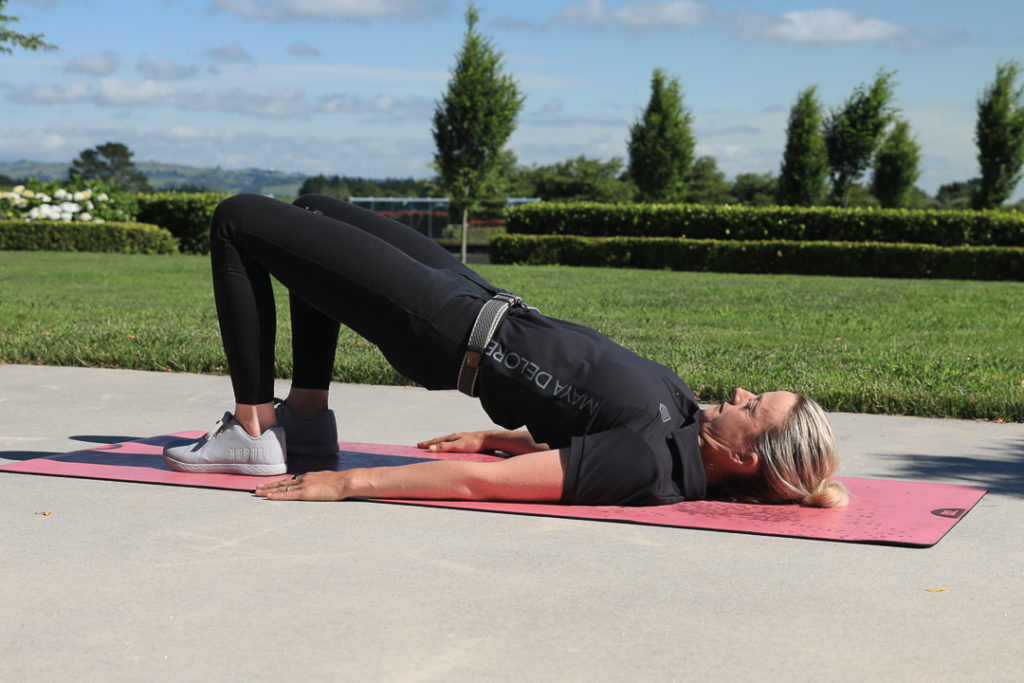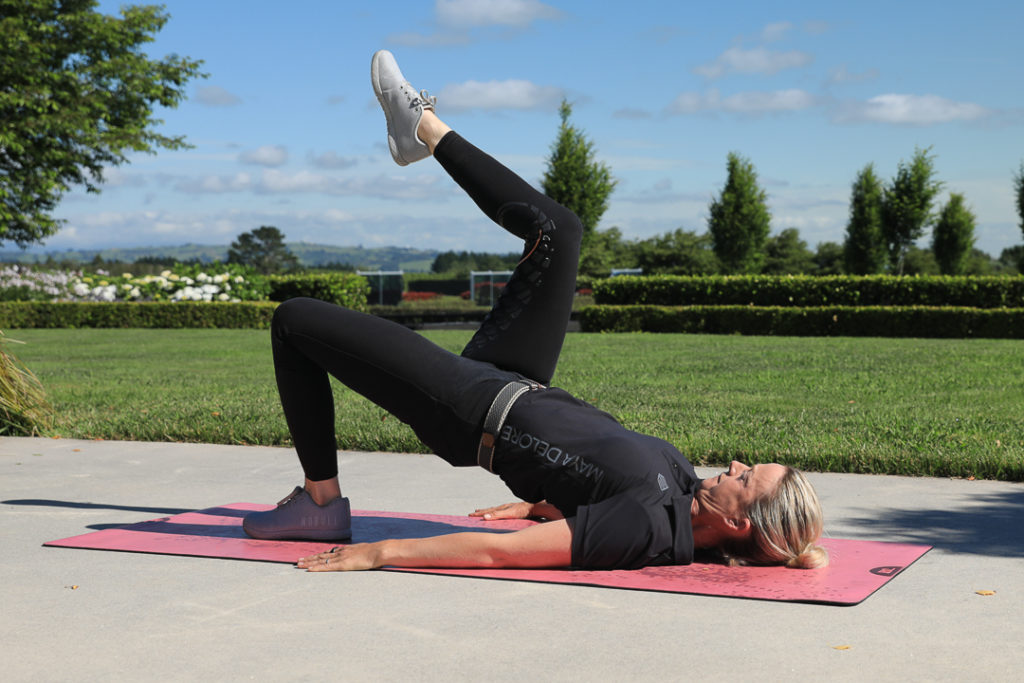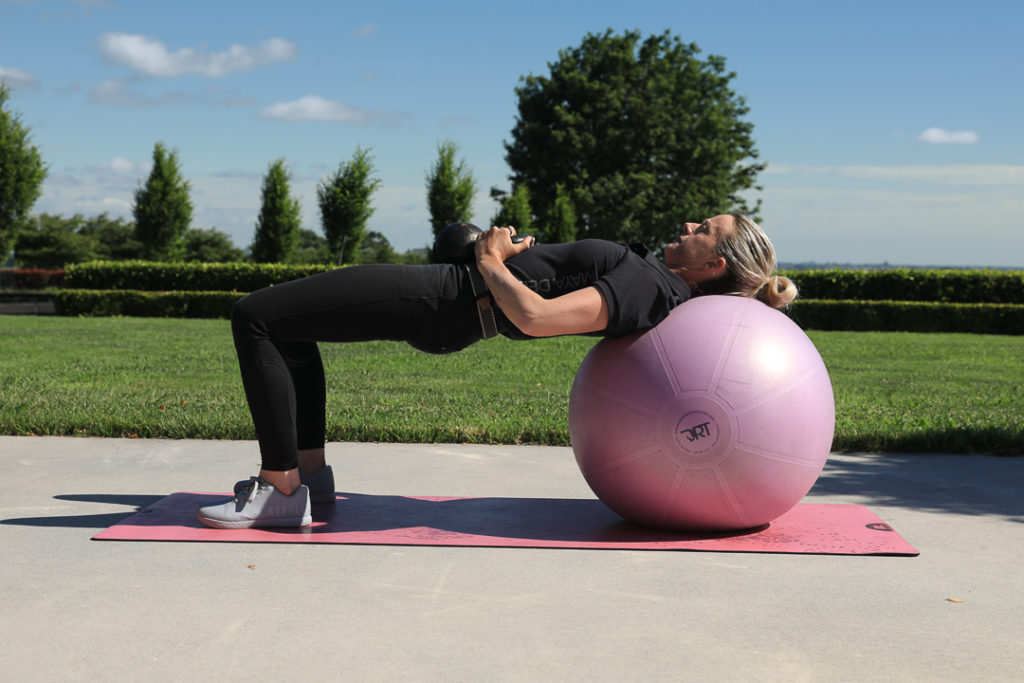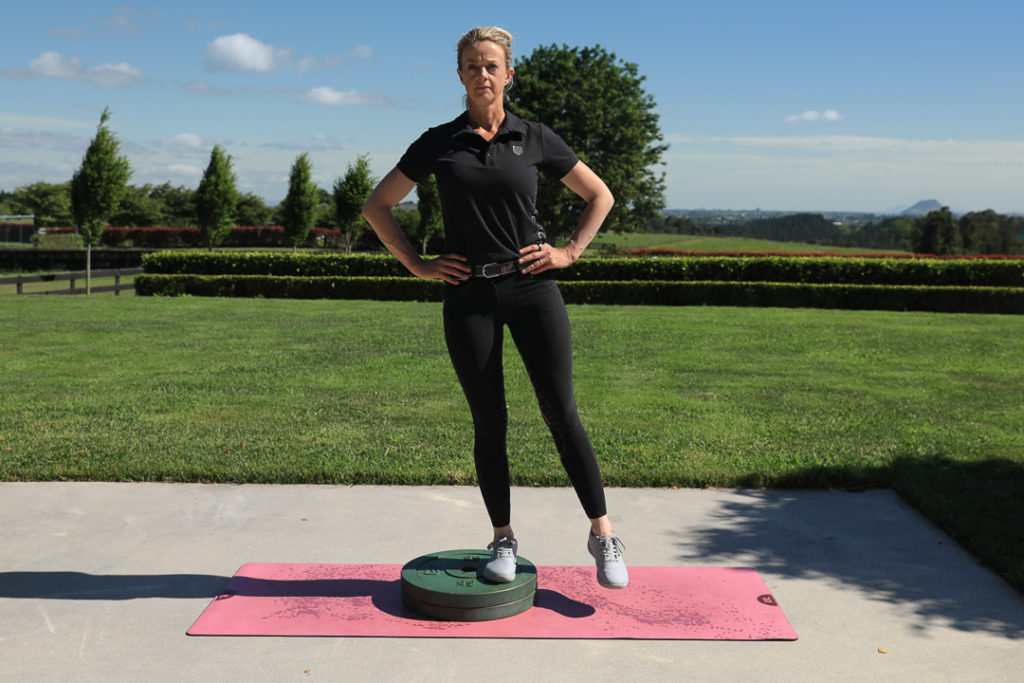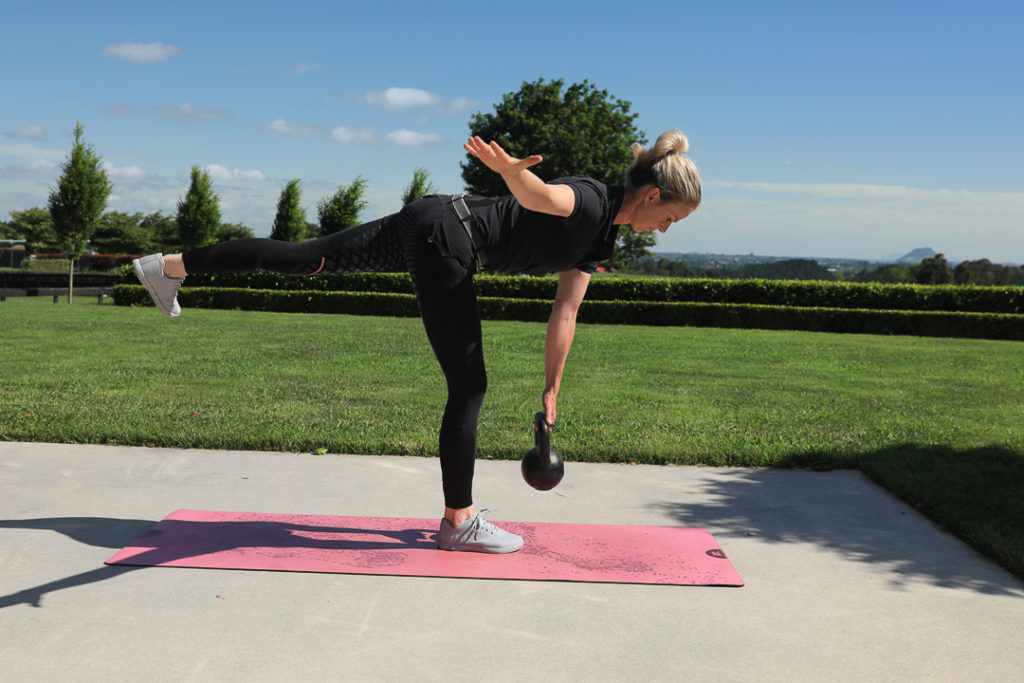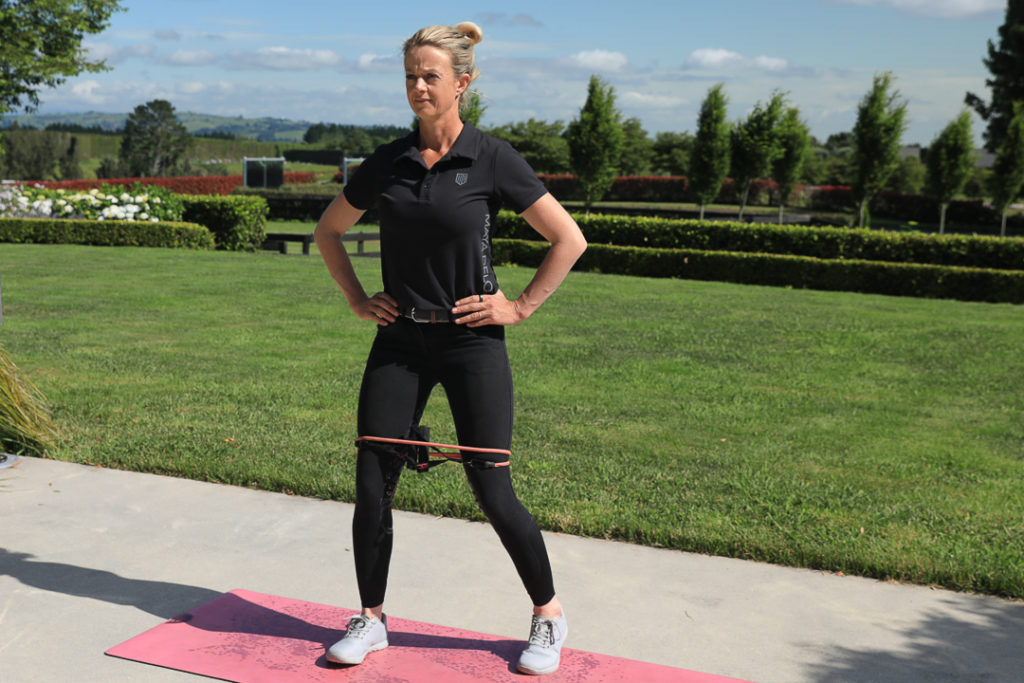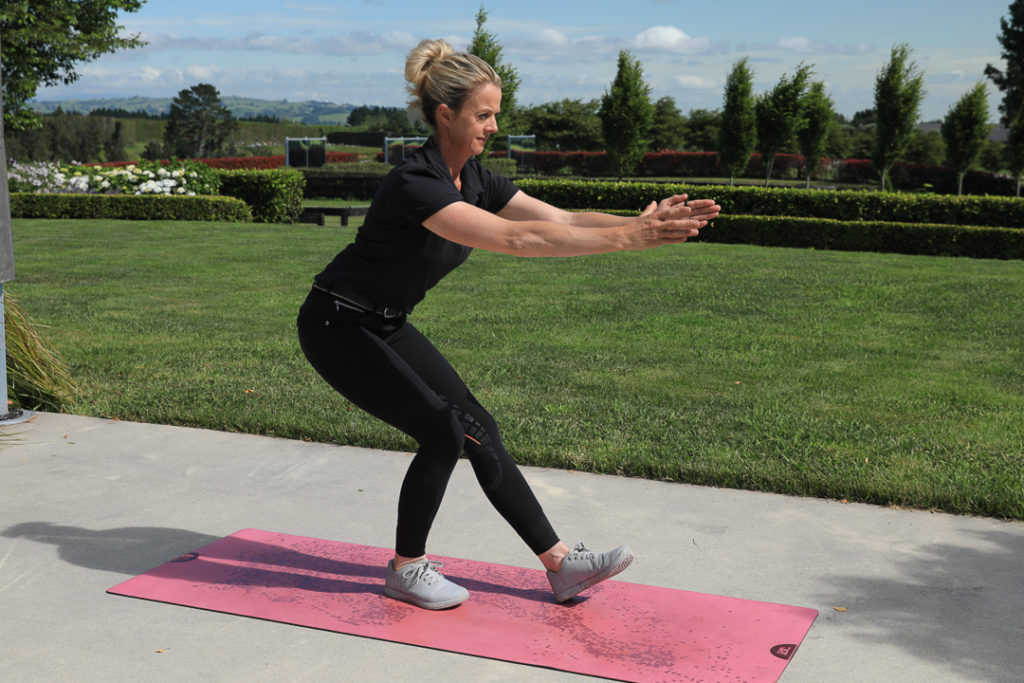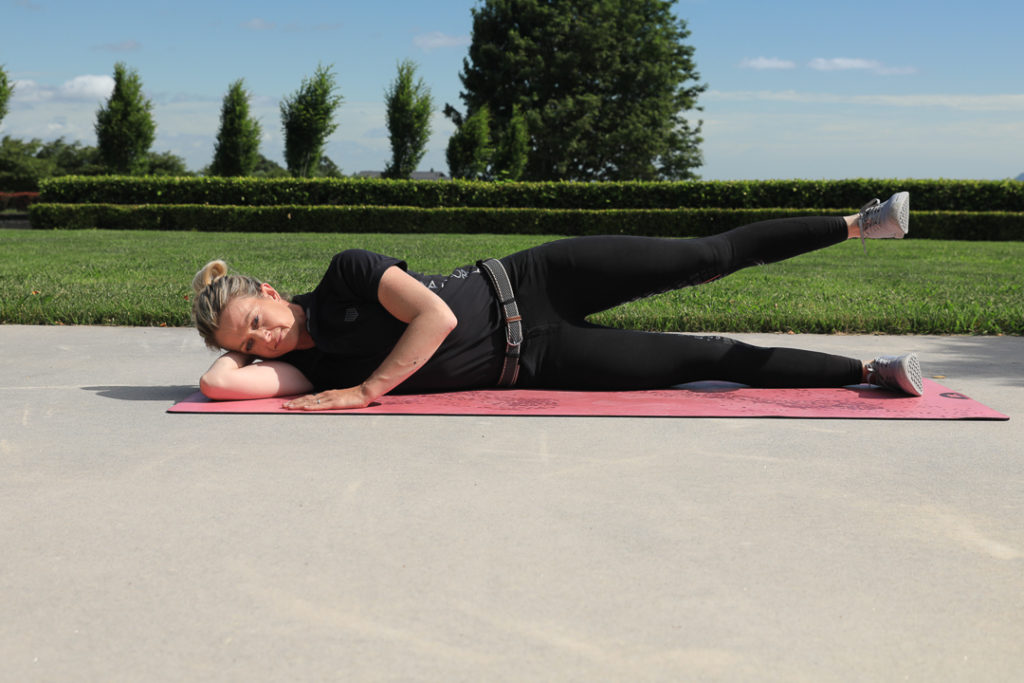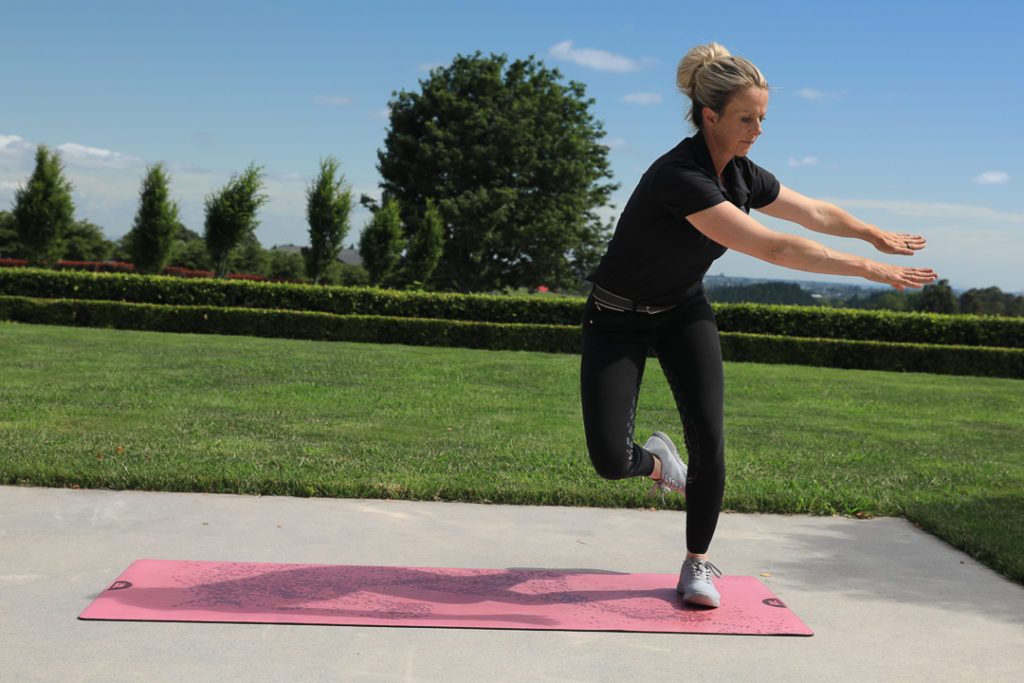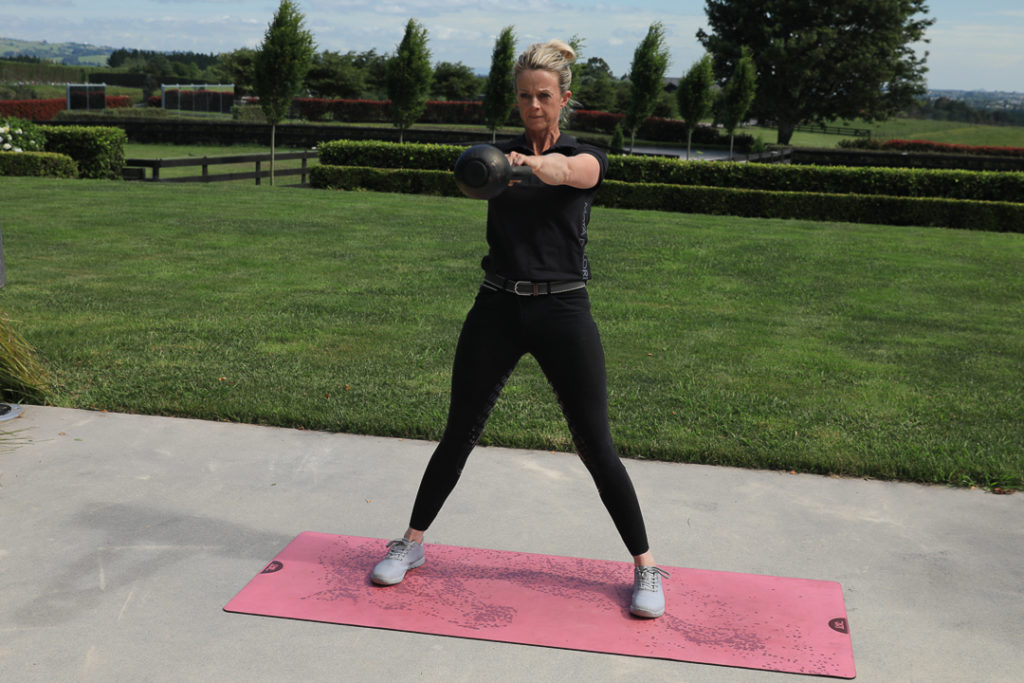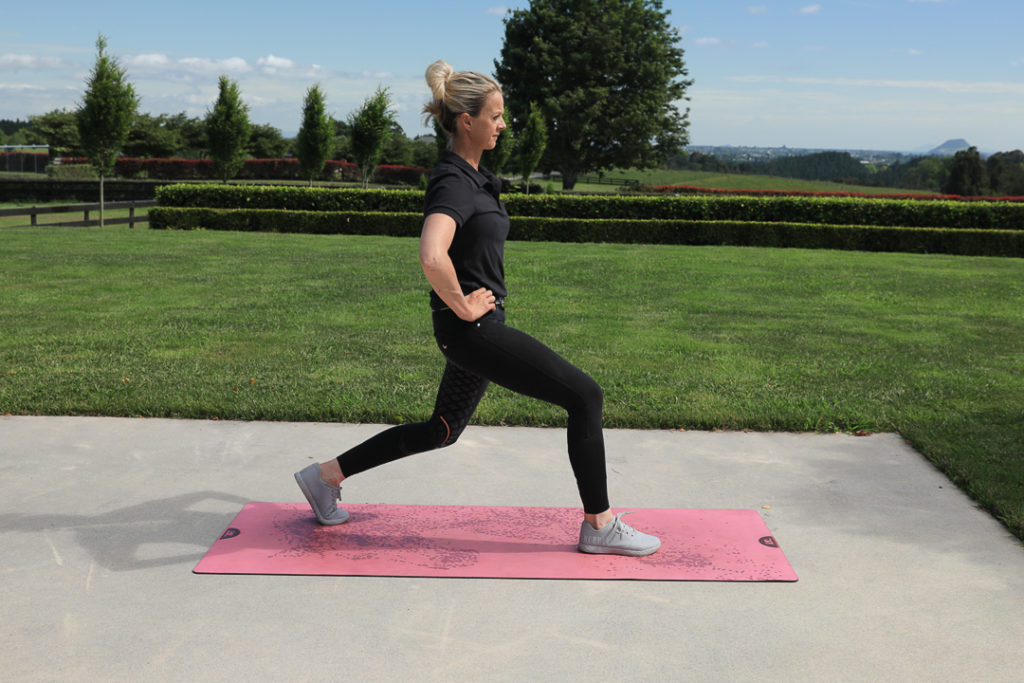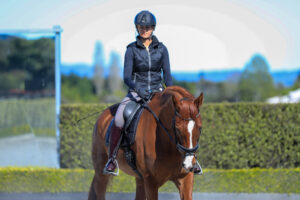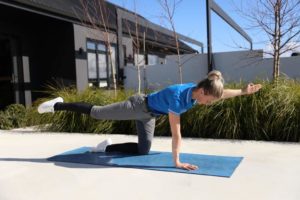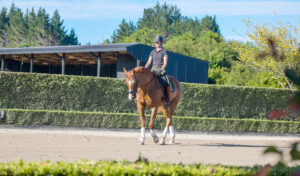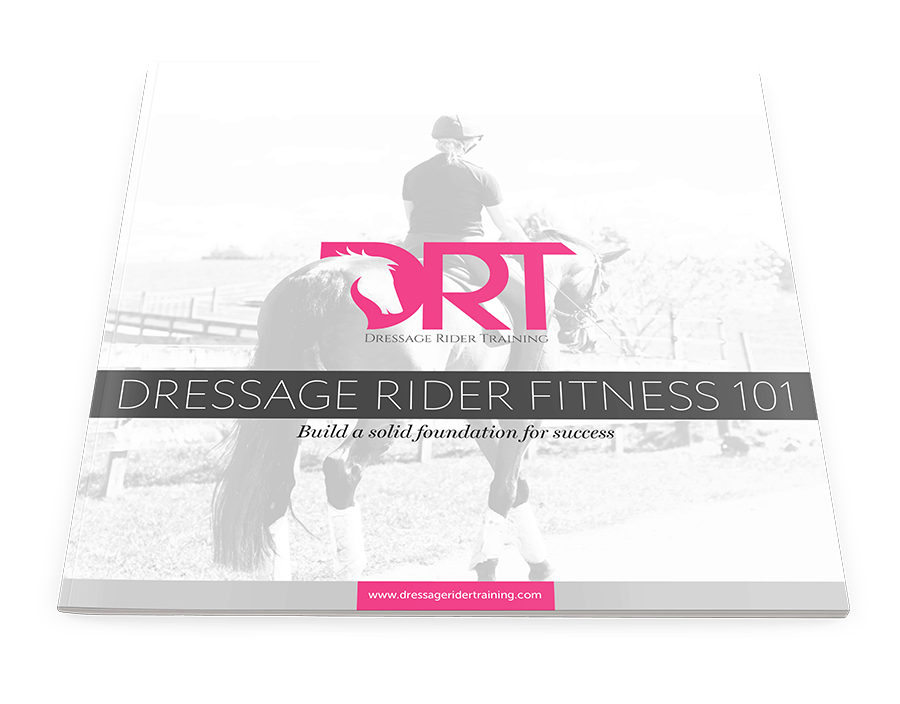Glute Strengthening Exercises For Dressage Riders
Here are a selection of 11 glute strengthening exercises for riders to help improve your pelvis position and stability in your seat while riding.
So why do we need glute strengthening exercises? For what seems like forever, coaches and trainers (me included) have told riders to use your abs and strengthen their core — in most cases meaning the muscles of your torso that support your spine. You have heard me mention that your core is your central unit, that includes everything except your legs, arms and head. So today I thought I would discuss the not so commonly discussed powerhouse muscles that support your pelvis. Your glutes! And give you some glute strengthening exercises specific to dressage riders.
When we walk and run, the glutes play a role in holding our pelvis level and steady, they extend our hip, help propel us forward, and keep our legs, pelvis, and torso aligned. They also do the same job when we are in the saddle, so when our glutes are faulty, or imbalanced our entire kinetic chain is disrupted this can lead to common injuries further in the body, including achilles tendinitis, shin splints, knee pain, sciatica and iliotibial-band syndrome and often lower back pain.
Part of the problem lies with glutes not being active throughout routine activities, which can make your hamstrings, quadriceps, and calves disproportionately stronger. All of which can result from too much time spent sitting down and to put it bluntly your glutes may have fallen asleep. Tight muscles, specifically the hip flexors, can inhibit the glutes and prevent their muscle fibers from firing.
In order to sit square, balanced and stable in the saddle your glutes play a major role. The help support your pelvis and lower back all of which have the role of moving with the horse and absorbing the horses movements. So weakness in the chain can result in these forces been placed elsewhere.
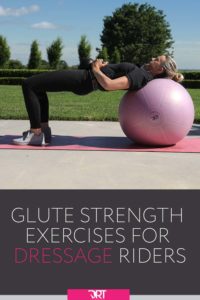
Everything is connected like links in a chain and when one of those links isn’t working efficiently, the whole chain system gets effected. My goal is to help your get your whole body working efficiently to enhance your riding.
So here are some glute strengthening exercises for you to try out. See if you notice one side stronger than the other and do these at least once a week to improve the recruitment of your glutes.
Strength Exercises for dressage riders
1. Bridges
Bridges are a great way to strengthen the lower back, glutes and hamstrings. Really important areas for helping to stabilize the pelvis and hips.
Start with your heals underneath your knees and simply lift your hips up by squeezing your bottom (glutes) and lower back down again. Think of tucking your tailbone under to really activate your glutes and lower abdominals.
Bring in more stability by crossing hands over your chest. This will make it slightly more challenging.
Aim to do 15 reps and combine as a circuit with the other exercises to get a full workout for your glutes.
2. Single leg bridges
This is an advancement on the previous exercise and great for helping to stabilize the pelvis and hips. By doing these single leg bridges we can really highlight any areas that may be tight or weak and which side is stronger and weaker.
Start with your heals underneath your knees, lift one leg up and lift your hips up by squeezing your bottom (glutes) and then lower back down again.
If this is too much, stick to the double leg bridges.
Aim for 15 reps on each leg. You can alternate legs to begin with and then as you get stronger aim to do 15 on each side, then move onto next exercise.
3. Weighted Hip Thruster
Great to help you strengthen your glutes to avoid lower back, hip and knee pain and can be a great way to strengthen your legs while working around knee injuries if lunges and squats are contraindicated.
This hip driver move, while it targets both the upper and lower glute maximus fibers (with maybe a slight bit more of a focus on those upper glute fibers), will also work your hamstrings and quads.
Using a bench, balance ball or even a couch place some weights over your hips or a resistance band and place your feet hip distance apart with heels under your knees.
Lower your bottom to the ground, just like you would in a bridge and then using your glutes press your hips up to their highest point.
Ensure you are fully engaging your glutes to do the movement and not just pressing through your feet.
Aim for 15 reps, think of lowering slowly and engaging quickly.
4. Hip Hike
Stand with right foot on a step, box, or bench at least four inches high with left foot hanging off the edge. Keep both hips squared forward and shoulders level.
Place hands on hips for an extra visual aid and balance.
Keeping left leg straight, no bend in knee, raise left hip directly upward and then use hip and core to lower left foot below the step.
Return to starting position and repeat slowly and with control.
Aim for 15 reps each side, think of lowering slowly and engaging quickly.
5. Single-Leg Deadlift
This posterior chain focused hip hinge move is also a great exercise to improve your stability and balance.
The single leg deadlift will target your glutes, hamstrings, back and abs and is a great move to include because it can help you work to correct any imbalances between both sides since it is a unilateral movement.
Just make sure to progress this move slowly as you want to make sure you can fully hinge correctly and sit back to load your glutes while staying balanced.
Beginners should do this with no weight at all and even keep back leg on the ground while using support of a wall for balance. (If this is to much, begin with both legs hip distance apart and a standard deadlift, by hinging at hips and touching toes.)
Kettlebells or dumbbells can be great tools to start with as you can help yourself hinge correctly by lowering the weights down and back toward your instep or even your heel.
By hinging with a neutral spine while lowering the weights back toward the midline of your foot, you can avoid yourself shifting your weight forward or reaching out, which can often lead to you overloading your lower back.
First, start standing with feet hip-width apart. Shift weight to your right leg, then keeping your shoulders back and your back straight, hinge at the hips and reach your hands toward the ground as left leg swings back behind you. Return back to starting position and repeat. As you build strength, hold weights for more of a challenge.
Single leg deadlifts are great for seeing how balanced and stable we are. Often we have one side stronger or weaker than the other and this can be highlighted on a horse by sitting more into one seattbone. So by doing this you will gain more awareness as to what is going on in your body and improve those imbalances.
Aim for 15 reps each side, but you can alternate to begin with as you build up strength and stability.
6. Penguin walk
The penguin walk is a great glute strengthening exercises that will really target the muscles that stabilize us in our lateral walk while riding.
Start standing with a microbend in knees and place a resistance band just above your knees.
Place hands on hips for balance and shift weight to left leg by bending right knee.
In a slow, controlled motion, kick right foot back behind you and to the side and then back to the starting position. That’s one repetition. Repeat on other leg. To make this more challenging keep the right leg off the ground through all of the movement and stay on the same leg for more repetitions.
Aim for 15 each side, and try and move through the exercise smoothly, but quickly to help improve balance, stability and reaction time.
7. Single-Leg Squat
Stand on your right leg and lift left leg out in front of you.
Stand tall (don’t round your shoulders), and extend arms straight out so they are parallel to left leg.
Keep right knee over right ankle as you send hips back and lower down into a squat. Your hands can extend out for balance.
Push into right heel to come back to starting position. Complete reps then repeat on other leg.
Start with shallow squats, then go deeper as it becomes easier.
You can definitely use support for this initially, but ensure you are using your leg to do the work and not the support to pull you up.
Aim for 8-10 reps each leg and you can alternate over to each side. Try and do these nice a slow, both up and down.
8. Side-Lying Leg Lift
Lie on left side with legs extended out straight.
Prop yourself up on left forearm and rest right hand in front of you on floor.
Lift right leg up while keeping your hips steady and facing forward (do not rotate backward).
Lower down and repeat. For an added challenge, wear an ankle weight or place a resistance band around ankles.
Aim for 15-20 reps each leg and then repeat on other leg.
9. Side Skater
Stand with feet together and crouch down by pushing hips back, keeping back flat and abs engaged.
Jump as far as you can to the right, landing lightly on the ball of your right foot as left leg swings back behind you.
Now jump as far as you can to the left, engaging glutes to push off, and land lightly on left foot as right leg swings behind you. That’s one rep.
Continue to repeat as you pump your arms as if you are skating.
Aim for 15-20 reps each side.
10. Kettlebell Swing
This is a great hip hinge, hip driven movement to work your entire posterior chain – your back, glutes and hamstrings.
The kettlebell swing though is a very technical move so be very conscious to engage your lats and proper push your butt back as you hinge or you will overload your lower back.
If your lower back is taking over, guess what isn’t benefiting as much from the move? Your glutes!
So use a lighter weight to begin with and really focus on squeezing your glutes to fire the weight forward.
Begin with just 8-10 really good reps, and as your form improves, build up to 15.
11. Reverse Lunge
Lunges are great glute strengthening exercises and a movement to strengthen your entire leg. By specifically using a reverse lunge variation, you can target your glutes more easily as well.
To make more challenging you can place your front foot onto a small step to create a deficit and in doing so you can work through a bigger range of motion and recruit more muscle fibres.
This increased range of motion not only makes the move harder without even adding loads, but it also helps you improve your mobility and stability.
Set up a strong neutral spine to begin with, then step back without twisting or leaning forward.
Lower down back knee to the ground, while keeping neutral spine and step forward again.
Take your time with each rep and focus on stable controlled movement not speed.
Aim to do 12-15 reps each leg.
So there you have a series of glute strengthening exercises you can try to help improve your dressage riding position.
Aim to do these regularly as a circuit 1-2 times per week to help improve the recruitment of these powerhouse muscles that help support and stabilize you.
For a full online program to help improve your riding fitness, check out our Dressage Rider Training Program
Want more articles and dressage exercises to help improve your riding? Check these out.
6 Dressage Exercises To Help Improve Your Riding Posture
7 Exercises To Improve Lower Body Strength And Balance
Mounting Exercises To Help Improve Getting On The Horse
Dressage Rider Leg Strength – 6 Exercises To Help Your Improve
5 Exercises To Test And Improve Your Rider Symmetry
More articles
Dressage Rider Training Program
Join other participants on our 12-week 'step-by-step' online rider
training program. Improve the 5 components of your riding.
Only available 3x per year.
see full details & register your interest
